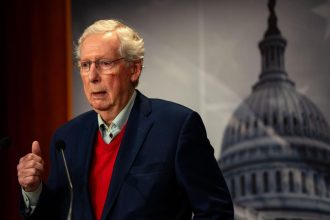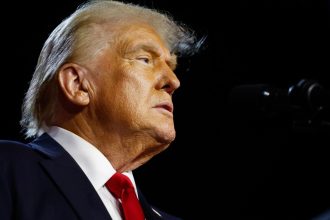In a landmark decision that has sent shockwaves through the regulatory landscape, the U.S. Supreme Court recently overturned the long-standing Chevron doctrine in the case of Loper Bright Enterprises v. Raimondo. This ruling, which originated from a dispute involving fishing companies, has far-reaching implications for regulatory agencies across the board, including the Department of Labor and its enforcement of the new fiduciary rule.
For nearly four decades, the Chevron doctrine has been a cornerstone of administrative law in the United States. Established in 1984, this principle granted federal regulatory agencies significant deference in interpreting ambiguous statutory language within their purview. Under this framework, courts would typically defer to an agency’s reasonable interpretation of a statute, rather than substituting their own judgment. This allowed agencies like the DOL and Securities and Exchange Commission to play a central role in shaping the implementation of laws through their regulations and guidance.
However, on June 28, 2024, the Supreme Court issued its ruling in Loper Bright Enterprises v. Raimondo, effectively overturning the Chevron doctrine. In a 6-3 decision, the Court determined that “an ambiguity is simply not a delegation of law-interpreting power” and that it should be the role of the courts, not agencies, to resolve statutory silences and ambiguities.
This decision represents a seismic shift in the balance of power between regulatory agencies and the judiciary. No longer can agencies rely on Chevron deference to uphold their interpretations of the laws they administer. Instead, courts will now be required to exercise independent judgment in interpreting statutes and reviewing agency actions.
Implications For Fiduciary Rule Enforcement And Viability
The Loper Bright ruling is already having significant implications for the enforcement and viability of the DOL’s new fiduciary rule, released earlier this year, which seeks to impose a heightened standard of care on investment advisors providing recommendations to retirement plan participants and IRA owners. In fact, last week United States District Judge Jeremy D. Kernodle put a hold on the effective date of the fiduciary rule, citing Loper Bright in the order. Judge Kernodle leveraged this new precedent to assert that the 2024 fiduciary rule and its amendments to Prohibited Transaction Exemption 84-24 were “contrary to law and arbitrary and capricious,” thus necessitating a stay.
By citing the Supreme Court’s recent rejection of the Chevron doctrine, he emphasized that courts must now take a more active role in statutory interpretation. This shift played a pivotal role in his ruling, as he determined that the DOL’s attempt to redefine “investment advice fiduciary” under ERISA overstepped its regulatory authority.
Under the previous Chevron framework, the DOL would have been afforded significant deference in interpreting the ambiguous language of ERISA and defining the scope of fiduciary duties. However, with Chevron no longer in play, the courts will now play a more central role in interpreting the fiduciary rule’s provisions.
This shift could make certain aspects of the rule more vulnerable to legal challenges and potentially more difficult for the DOL to enforce. For instance:
- Definition of Fiduciary: The courts may now have greater latitude to interpret who qualifies as a fiduciary under the rule, potentially narrowing or expanding the scope of individuals and entities subject to its requirements.
- Best Interest Standard: The interpretation of what constitutes acting in a client’s “best interest” may be subject to more varied judicial interpretations, potentially leading to inconsistent application across different jurisdictions.
- Disclosure Requirements: Courts may scrutinize the rule’s disclosure mandates more closely, potentially finding some requirements to be beyond the DOL’s statutory authority.
- Enforcement Actions: The DOL may face greater challenges in enforcement actions, as defendants could more readily contest the agency’s interpretation of the rule in court.
It’s important to note that while the Loper Bright decision doesn’t automatically invalidate existing regulations, it does open the door for fresh legal challenges to agency interpretations that were previously upheld under Chevron deference.
Plan Sponsors Beware
In light of this development, plan sponsors must remain more vigilant than ever in ensuring they are working with true fiduciaries who are acting in the best interests of the company and its participants. Key signs of a true fiduciary include transparent fee structures, lack of commission-based compensation, and a focus on long-term investment strategies aligned with the plan’s objectives.
Independent accreditation can provide plan sponsors with further assurance the advisor is adhering to the highest industry standards. The CEFEX certification, for example, demonstrates the fiduciary’s commitment to putting the plan’s interests first and following best practices in areas like investment management, fee transparency, and governance.
The loss of Chevron deference doesn’t negate the fiduciary rule or its underlying principles, but it does introduce an element of uncertainty into its enforcement and interpretation. While the full impact of this ruling on the enforcement of the DOL’s fiduciary rule remains to be seen, it’s clear that the interpretation of this and other regulations will now fall more heavily on the courts.
For plan sponsors, this underscores the importance of the plan advisor search and selection process, staying informed about legal developments and maintaining a steadfast commitment to acting in the best interests of plan participants. As the regulatory environment evolves in the wake of this landmark decision, vigilance and adaptability will be key to navigating the changing landscape of fiduciary responsibilities.
Brian Menickella is the founder and managing partner at Beacon Financial Services, a broad-based financial advisory firm based in Wayne, PA.
Securities and Advisory services offered through LPL Financial, a registered investment advisor. Member FINRA/SIPC.
This material was created for educational and informational purposes only and is not intended as ERISA, tax, legal or investment advice.
Read the full article here














